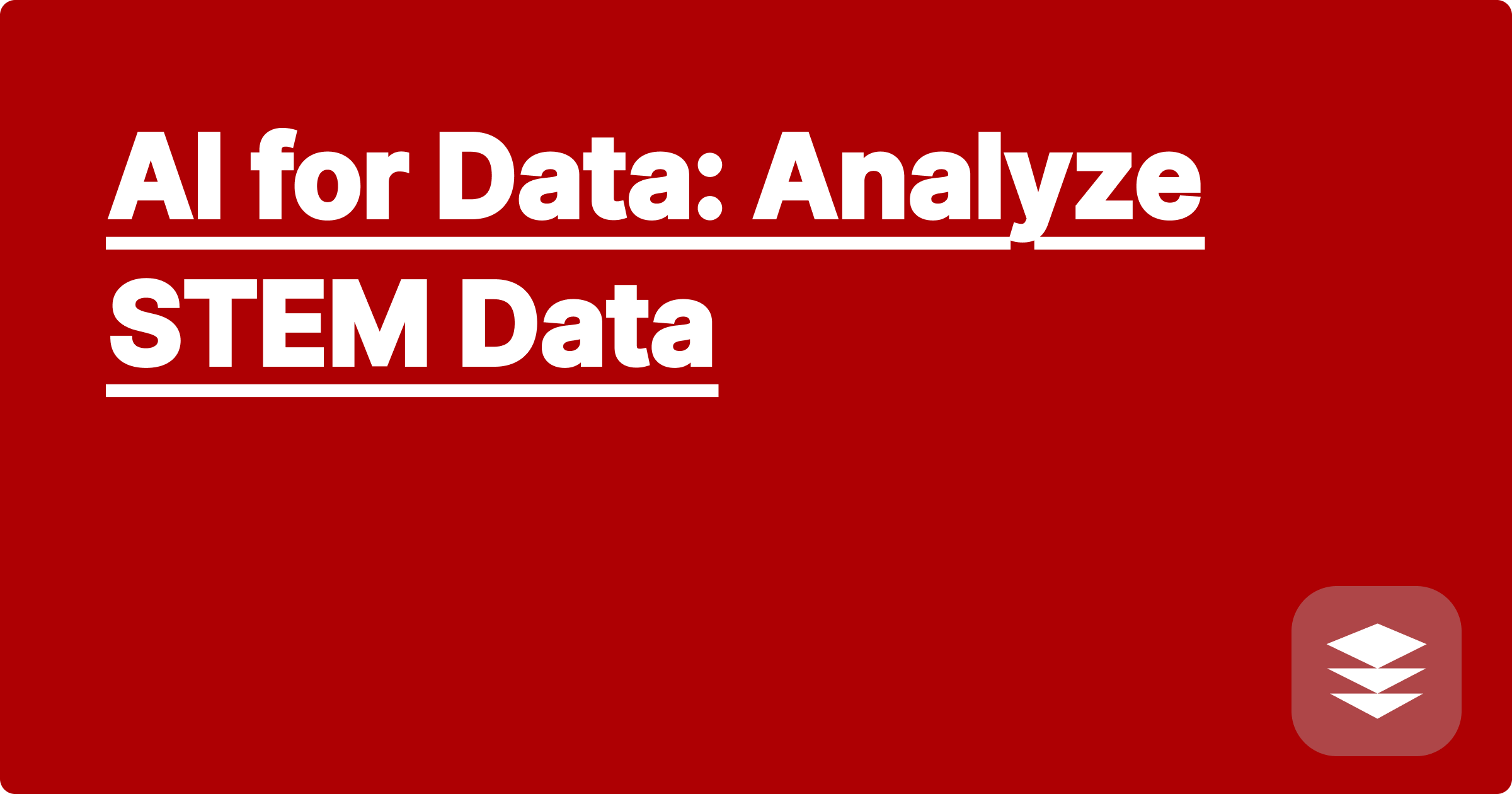
The sheer volume of data generated in STEM fields can feel overwhelming. From complex simulations in physics to massive genomic datasets in biology, effectively analyzing this information is crucial for progress, yet often presents a significant bottleneck. Traditional methods of data analysis can be time-consuming, requiring significant manual effort and specialized expertise. Imagine spending weeks sifting through datasets, only to realize you need to start over with a different approach. This is where the power of Artificial Intelligence steps in, offering a game-changing solution for STEM students and researchers. AI can automate tedious tasks, uncover hidden patterns, and accelerate the pace of discovery, transforming how we approach data analysis in STEM.
For STEM students, particularly those juggling coursework, research, and perhaps even part-time jobs, the ability to efficiently analyze data is paramount. Time is a precious commodity, and AI offers a way to maximize its use. Imagine having a personalized AI assistant that can help you manage your time, analyze your data, and even assist with literature reviews. This isn't science fiction; it's becoming a reality with the emergence of tools like Generalized Personal AI (GPAI). This blog post will explore how AI can revolutionize your STEM journey, focusing on practical strategies and lesser-known tools that can give you a competitive edge. We'll dive into how GPAI and other AI-powered tools can streamline your workflow, boost your productivity, and ultimately help you achieve your academic and research goals.
STEM fields are data-rich environments. Experiments generate massive datasets, simulations produce complex outputs, and literature reviews require sifting through mountains of publications. Traditional data analysis methods often involve manual processing, statistical software packages, and significant time investment. For example, analyzing a single biological experiment might involve cleaning data, performing statistical tests, visualizing results, and then repeating the process with different parameters. This can be incredibly time-consuming, especially for students and researchers working on multiple projects simultaneously. Furthermore, staying updated with the latest research and identifying relevant papers can be a daunting task, requiring hours of searching through databases. This data deluge can hinder progress, delaying research breakthroughs and impacting academic performance.
AI offers a powerful toolkit to tackle these challenges. Tools like ChatGPT, Claude, and Wolfram Alpha can be integrated into the research workflow to streamline various tasks. ChatGPT, for instance, can assist with literature reviews by summarizing key findings from multiple papers and identifying relevant research areas. Wolfram Alpha can perform complex calculations and provide insights into mathematical and scientific concepts, saving valuable time and effort. Beyond these commonly known tools, specialized AI applications are emerging for specific STEM disciplines. These niche tools can analyze complex datasets, identify patterns, and even generate predictive models, significantly accelerating the research process.
Integrating AI into your workflow can begin with simple steps. First, identify the specific challenges you face in your research or coursework. Are you struggling with data cleaning, statistical analysis, or literature reviews? Once you've pinpointed the bottleneck, explore available AI tools that can address your specific needs. For example, if you're working with biological data, consider tools specializing in genomic analysis or protein structure prediction. Start by experimenting with these tools using small datasets or specific tasks to get a feel for their capabilities. As you become more comfortable, you can gradually integrate them into larger projects. Remember to critically evaluate the output of any AI tool and validate the results using traditional methods.
Consider a student researching the effectiveness of different drug compounds. Traditionally, this would involve manually analyzing experimental data, comparing results across different compounds, and identifying potential candidates. An AI-powered drug discovery platform can automate this process, analyzing large datasets, predicting drug efficacy, and identifying promising leads significantly faster. Similarly, a physics student simulating fluid dynamics can leverage AI to optimize simulation parameters and analyze the resulting data, reducing computational time and improving accuracy. GPAI can also play a crucial role in personalizing the learning experience. Imagine setting a research goal with your GPAI, which then helps you break down the project into manageable steps, schedule research time, and even suggest relevant literature. GPAI can act as a personalized research assistant, providing support and guidance throughout the research process.
Leveraging AI effectively requires a strategic approach. Start by identifying your specific needs and selecting the right tools for the job. Don't be afraid to experiment with different platforms and find what works best for you. Focus on understanding the underlying principles of the AI tools you use, ensuring you can critically evaluate their output. Incorporate AI into your time management strategy by setting realistic goals and using AI-powered tools to track your progress. GPAI can be invaluable for this, helping you prioritize tasks, schedule meetings, and manage your research timeline. Finally, remember that AI is a tool, and its effectiveness depends on how you use it. Combine AI's power with your own critical thinking and domain expertise to achieve optimal results.
To maximize your GPAI experience, define clear goals and communicate them effectively. For instance, if you're struggling with time management, ask your GPAI to help you create a personalized study schedule and track your progress. If you're overwhelmed by a large research project, ask your GPAI to help you break down the project into smaller, manageable tasks and suggest relevant resources. The more specific your requests, the more effective your GPAI will be. Think of your GPAI as a collaborative partner, working together to achieve your academic and research goals. By combining the power of AI with your own knowledge and skills, you can unlock new levels of productivity and achieve greater success in your STEM journey. Start exploring the world of AI today and discover how it can transform your academic and research experience.
AI for Labs: Speed Up Research
AI Homework Helper: STEM Made Easy
AI Design Tools: Engineering Made Fun
AI Solver: Conquer STEM Problems
AI Flashcards: Master STEM Concepts
AI for Data: Analyze STEM Data